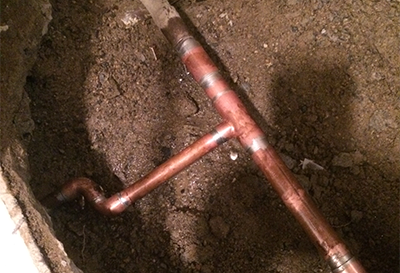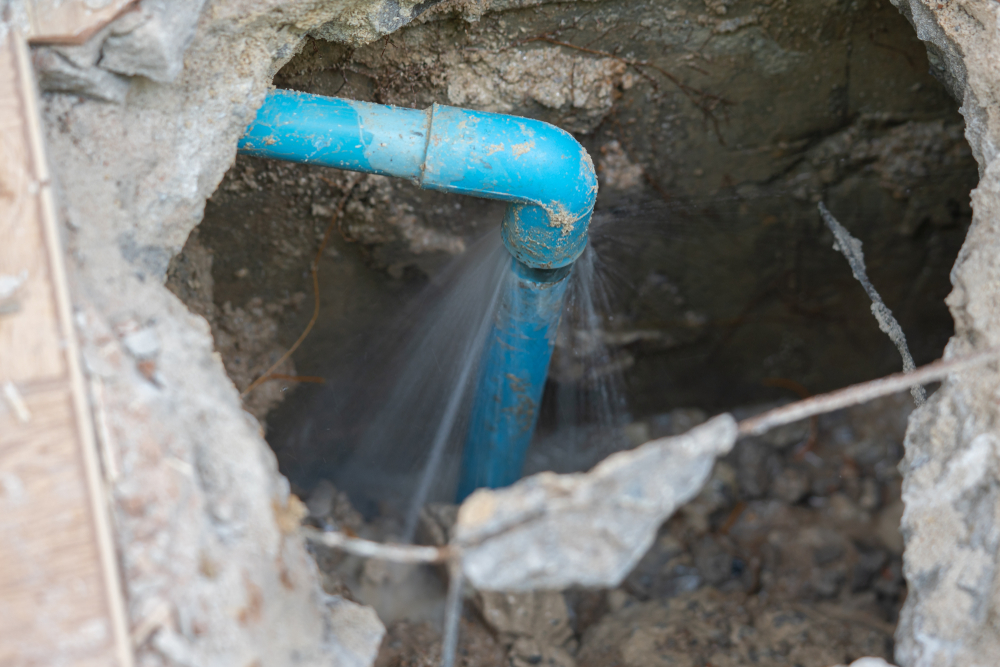Guide To Water Leak Detection At Home
Guide To Water Leak Detection At Home
Blog Article
We have found this post about Detecting hidden plumbing leaks down the page on the web and felt it made sense to write about it with you in this article.

Early detection of leaking water lines can minimize a possible disaster. Some tiny water leakages may not be noticeable.
1. Analyze the Water Meter
Every house has a water meter. Inspecting it is a surefire way that helps you discover leaks. For beginners, turn off all the water sources. Make certain nobody will purge, utilize the tap, shower, run the cleaning maker or dishwashing machine. From there, go to the meter and watch if it will certainly change. Considering that no person is utilizing it, there ought to be no movements. If it moves, that shows a fast-moving leak. Similarly, if you identify no changes, wait an hour or 2 as well as check back once again. This means you might have a sluggish leak that can even be below ground.
2. Inspect Water Usage
Analyze your water expenses and also track your water intake. As the one paying it, you need to observe if there are any inconsistencies. If you identify sudden changes, in spite of your intake being the same, it means that you have leaks in your plumbing system. Remember, your water bill should drop under the exact same variety each month. An unexpected spike in your expense shows a fast-moving leakage.
A constant increase every month, even with the same behaviors, shows you have a sluggish leakage that's additionally gradually intensifying. Call a plumber to completely check your residential property, especially if you really feel a warm area on your flooring with piping beneath.
3. Do a Food Coloring Examination
When it comes to water consumption, 30% comes from toilets. If the color somehow infiltrates your bowl during that time without flushing, there's a leakage between the container and also bowl.
4. Asses Outside Lines
Don't forget to inspect your outdoor water lines also. Examination spigots by attaching a yard tube. Should water permeate out of the connection, you have a loosened rubber gasket. Replace this and also make sure all connections are limited. If you have actually got a lawn sprinkler, it will certainly assist get it properly examined as well as preserved every year. One small leakage can throw away lots of water as well as increase your water bill.
5. Analyze the situation and inspect
House owners should make it a behavior to check under the sink counters as well as also inside closets for any kind of bad odor or mold and mildew growth. These two warnings suggest a leak so prompt focus is needed. Doing routine inspections, even bi-annually, can save you from a significant problem.
Examine for discolorations and also compromising as the majority of appliances and also pipelines have a life expectations. If you presume dripping water lines in your plumbing system, don't wait for it to rise.
Early detection of leaking water lines can reduce a potential disaster. Some little water leakages might not be visible. Examining it is a guaranteed way that assists you uncover leaks. One tiny leakage can squander tons of water as well as increase your water bill.
If you believe leaking water lines in your plumbing system, don't wait for it to escalate.
Top 4 Signs of a Plumbing Leak in Your Home
Unusually High Utility Bills
As someone who regularly pays your water and energy bills, you know when something is a little off. If you are utility bills are higher than usual, or have seen a sudden spike in cost, it could be an indication that you have a hidden plumbing leak somewhere in your system. First, contact your utility company to confirm that your bill is correct, and if it is, your next step is to contact in licensed plumber for a home plumbing inspection in Indianapolis.
Leaky Plumbing Fixtures
Take a closer look at your plumbing fixtures that dispense water, such as your bathroom and kitchen sink faucets, your shower heads, and even your outdoor spigots. If they are leaky, even when turned off (don’t forget the old saying, “lefty-loosey righty-tighty” to be sure), it could be that you have a leak somewhere in your plumbing system. This type of concealed leak is the exact kind that can get worse, fast; so, it is important that you immediately contact in Indianapolis plumbing company for emergency plumbing repair.
Dying Patches of Grass in the Lawn
You wouldn’t immediately think that poor lawn quality could indicate hidden plumbing leak in your house or building, but it actually can. Noticing large spots of dead or dying grass in your lawn is indicative of an underground plumbing pipe leak. This could be caused by a pipe rupture, cracked sewage lines, pipe burst, or even a poorly sealed gasket or connecting hardware. Oftentimes, property owners also notice puddles of standing water in their lawn, which is a sign of an emergency water leak plumbing repair.
Running Water Meter Dial
A common way for homeowners to check if they have a concealed water leak within the plumbing system is to examine the water meter dial. To do so, take a pen and paper out to your water meter and write down the number the dial is pointing to. Wait 20 to 30 minutes, and then go back to see if the dial has moved. If the dial continues to move, it is indicative of a plumbing leak. In this case you should contact in Indianapolis master plumber right away.
https://www.weilhammerplumbing.com/blog/how-to-spot-a-hidden-plumbing-leak-in-the-house/

As an avid person who reads about Locating water leaks, I think sharing that piece of writing was a good idea. If you appreciated our post if you please remember to pass it around. Thank-you for taking the time to read it.
Report this page